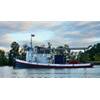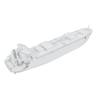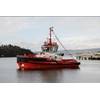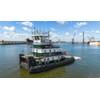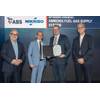WinGD and Mitsubishi Shipbuilding Sign MoU for Ammonia Collaboration

From left to right - Dominik Schneiter, Vice President R&D – WinGD, Klaus Heim, CEO – WinGD, Toru Kitamura, President and CEO - Mitsubishi Shipbuilding Co., Manabu Kawakado, Executive Director, Head of Marine Engineering Centre - Mitsubishi Shipbuilding Co. (Photo: WinGD)
Swiss marine power company WinGD and Japanese shipbuilder and technology developer Mitsubishi Shipbuilding Co., Ltd. have signed a memorandum of understanding to enter into a partnership on ammonia-fuelled vessels.
The project will see WinGD applying its X-DF-A ammonia-fuelled engines to a range of vessel designs, with Mitsubishi both designing the vessels and completing the fuel chain with its ammonia fuel supply system (AFSS).
Manabu Kawakado, Head of Marine Engineering Centre, Mitsubishi Shipbuilding Co., Ltd. said, “This collaboration will give both Mitsubishi and WinGD an important first-mover advantage in using ammonia in marine engines to meet IMO decarbonisation targets. It will set the path for the new generation of technology applicable to a wide range of vessels over the next decades.”
Under the partnership, WinGD will develop X-DF-A engines at appropriate sizes for the vessel designs, providing Mitsubishi with the specifications for installing the engines and the requirements for all auxiliary fuel systems. Mitsubishi will design the vessels, set performance parameters for the engines and further develop its existing AFSS for use with WinGD’s ammonia engines.
Dominik Schneiter, Vice President R&D, WinGD, said, “This project will allow WinGD and Mitsubishi to make further progress in bringing ammonia-fuelled capability to merchant vessels within our established future fuel development timeframe. It is a timely opportunity to apply X-DF-A engines across a wider range of bore sizes. Our aim is to develop the applicability of these engines and their critical fuel elements across multiple vessel types, while upholding the highest standards for environmental impact and for the safety of the crew on board.”
The project will commence in the third quarter of 2023, with a timeline considered that could place vessels in service by 2027.


